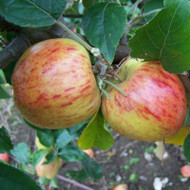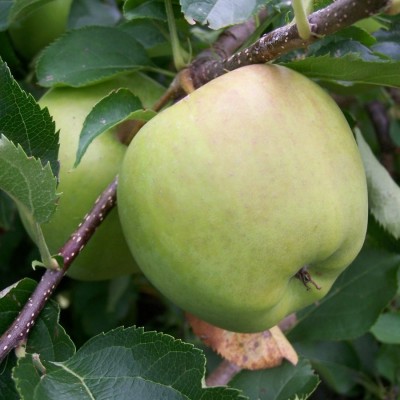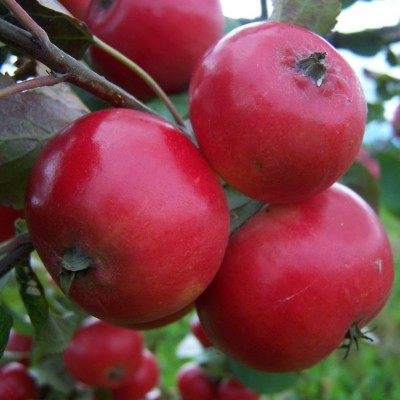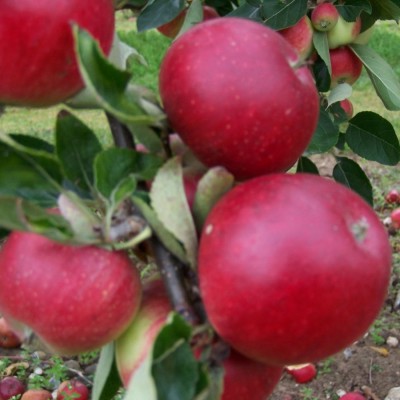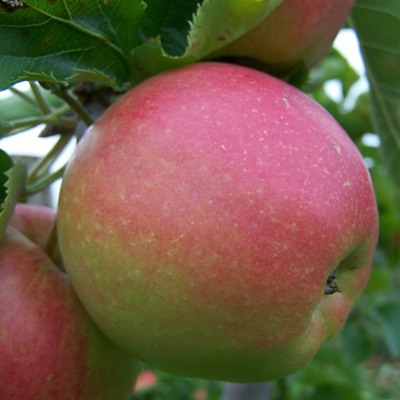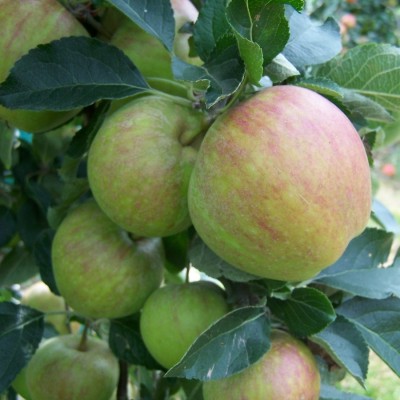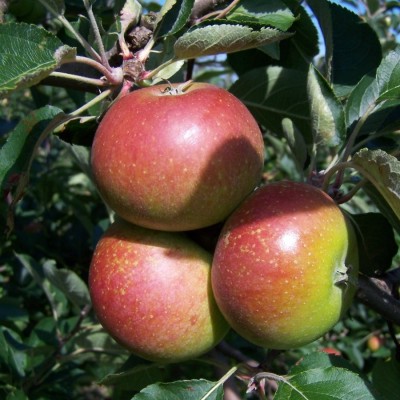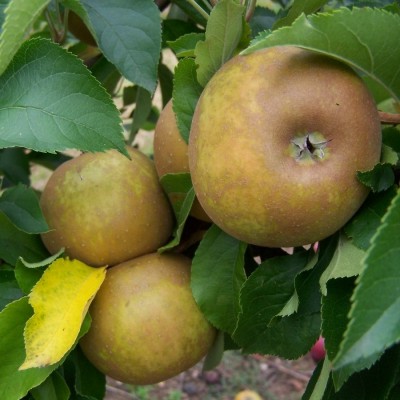Browse through our website and there is a bewildering choice on offer. There are over 5,000 named varieties of apple recorded in the UK, and although the vast majority are not available commercially to buy, there is no shortage of different choices for the gardener. If you are a seasoned fruit grower it can be straightforward to pick and choose – but for the novice, it can be utterly bewildering. Florid descriptions can sometimes be slightly misleading, and it is easy to get tempted by a variety with a rich and unusual history, when it actually might be susceptible to disease and a poor cropperIn this guide we will look at the easiest and most straightforward varieties to grow – if you are just starting out with growing apples these are the ones which should be on your short-list.
Before we get on to the actual varieties, I should explain the criteria I used to compile the list. First and foremost was flavour – after all, the easiest apples of all are the ones wrapped in cellophane on the supermarket aisle. If we are taking the time and trouble to grow our own fruit, we want them to taste at least as good as the ones we can buy. All the varieties on this list are a cut above the insipid fruit you find in the shops, which has often been cold stored for several months or picked under ripe and flown from the other side of the world. I’ve tried to include a wide range of flavours and textures, so there should be something which appeals.
The next most important consideration was disease resistance. No fruit tree will thrive on complete neglect; there are a few basic pruning and feeding jobs to be done to keep any tree in good health and producing top quality fruit. However, there are two diseases in particular which can affect apple trees, scab and canker, and some varieties have an inbuilt resistance to these two which make them particularly appealing to the beginner or the organic gardener following a ‘no-spray’ policy. Apple scab is a fungal disease which is spread by spores on wind and rain, so is normally particularly bad following a wet Spring, or in areas of high rainfall. It causes light brown spots on the foliage and brown specks and marks on fruit. Affected fruit is normally still useable if you peel the apple, but the scars it causes on the fruit often lets in a secondary infection of brown rot (and is an easy access point for wasp and bird damage) which can decimate the crop.
Apple canker is a more serious fungal disease which affects the bark of a tree, causing shrunken areas and will eventually cause the entire branch to die. Whilst trees can survive with canker for a long period, it can be a persistent problem in some orchards as it can easily spread from tree to tree. It commonly enters through pruning cuts or wounds caused by broken branches, so good hygiene will help prevent it. No apple is completely resistant to canker, but the varieties on this list all show at least some resistance.
Finally, to make the list these apples all had to be reliable, producing good crops year in year out. The key here is both that the blossom has some frost resistance so the entire crop is not lost if there are cold nights while the tree is in flower. Some apples are also prone to being biennial, i.e. setting a bumper crop one year whilst producing practically nothing the next. This can generally be overcome through thinning the crop in a good year by 40% or so in early June, (and thinning is still advisable for most fruit trees as it lets the remaining fruit swell and ripen properly), but all of the following will set good crops, year in year out.
Listed in order of ripening, from earliest to eat straight off the tree through to late storing varieties:
Discovery: popular, well-known and widely offered, but for some very good reasons. This is one of the best flavoured early apples - super sweet, crisp and juicy. Crops well and is much less prone to scab than its parent, Worcester Pearmain. It won’t keep for longer than 4 weeks before the fruits turn soft and floury, but it its peak in mid-late August it is an absolute treat.
Katy: Also known as ‘Katya’, this was originally bred in Sweden in 1947, and is another excellent early season choice. Having Worcester Pearmain and James Grieve as its parents, the bright red fruit is sweet and full of juice, but it is much more disease resistant than either of them. The great advantage of this variety is that the fruit can be eaten fresh, or make a wonderful juice, and any excess (it crops very heavily) can be made into a first-rate cider.
Jonagold: Developed in 1053 by Cornell University in New York State, this is a wonderful and much underplanted second early dessert apple. Having golden Delicious as one of its parents, the fruit is crisp and has plenty of sweetness, but there is still an underlying acidic bite. Jonagold has a reputation for being prone to scab, but here on the nursery in North Yorkshire the fruit is consistently clean, even in a wet summer. It is a triploid, so there need to be other apples within a quarter of a mile for good fruit set.
Jupiter: An excellent Cox-like apple, but one which is much easier to grow, especially for those in cold or wet locations. Bred in the 1960’s, the tall, handsome fruit have the tang and bite of a Cox’s Orange Pippin, but with plenty of juice. Regular to crop and the fruit are always clean and scab-free.
Crispin. Introduced in 1949 and called ‘Mutsu’ in its native Japan, it was renamed as Crispin for the UK market in the 1960’s. This is an excellent choice if you like a Golden Delicious-type apple – crisp, bright green fruit with a lovely bite and some sharpness. It crops extremely heavily and is very disease-resistant. It also cooks very well, keeping some of its shape, and makes a lovely pie filling.
Suntan: Another apple that was originally bred to have a Cox-like flavour but to be much easier to grow. The result of a long programme of breeding at the East Malling Research Station in the post war years, this has an exceptional flavour, full of pineapple acidity. Another that seems to have an undeserved reputation for being prone to scab, which may be why it seems less popular than it should be.
Egremont Russet: I had to include this old favourite, if nothing else to prove that it’s not just the newer varieties which are easy to grow. First recorded in 1872, these dull golden yellow fruits have a skin which is entirely covered in russeting, which makes it seem quite dry and coarse. The flesh however, is an absolute delight - rich and with a full ‘nutty’ flavour which none of the modern varieties come close to. It also makes possibly the nicest apple juice you have ever tasted. Compact in growth, so suitable for even a small garden.

